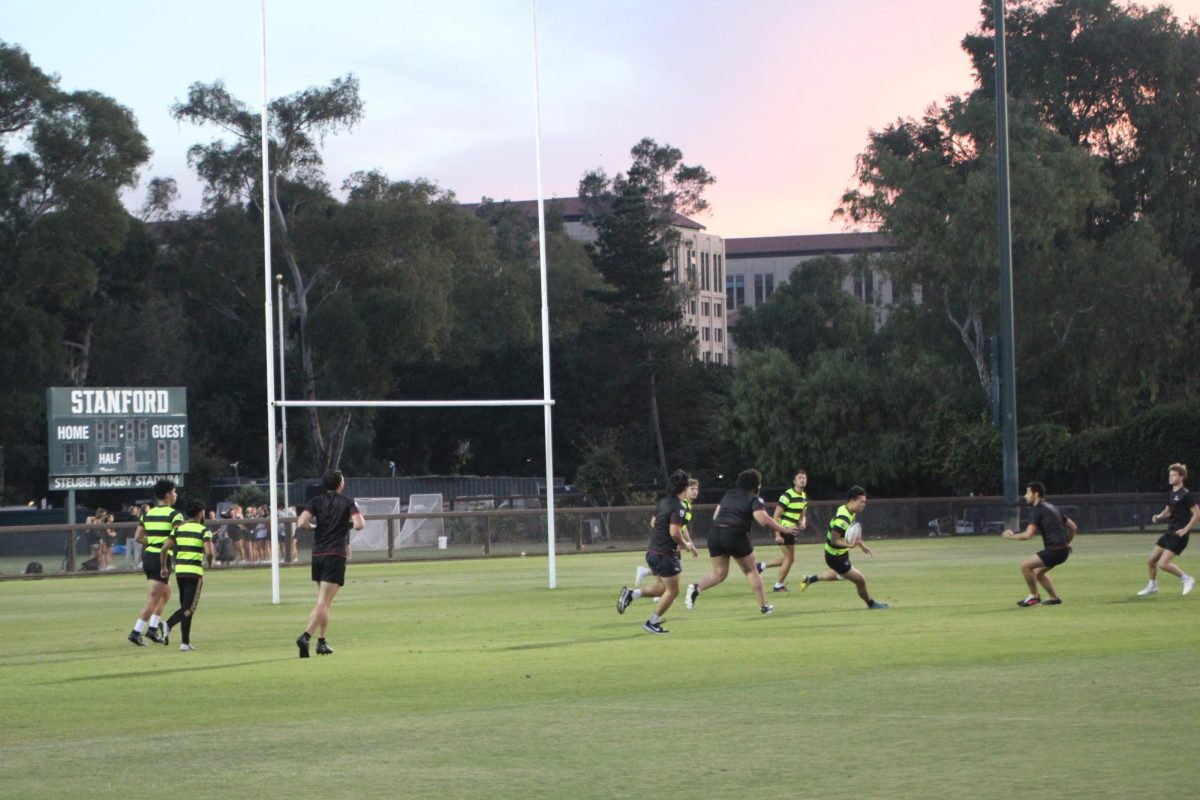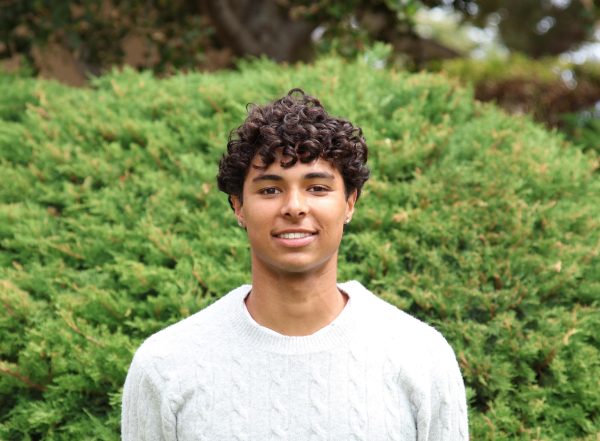When senior Johnny Latu first started playing rugby at 5 years old, the East Palo Alto Razorbacks were one of the few club teams to choose from. Now, there are more options than ever in the area.
Since the pandemic, 57% of rugby players are pre-teen, 24% of which are girls. Overall, Rugby participation grew by 11% prior to the 2023 Rugby World Cup, reaching 8.5 million players according to RugbyPass.
Latu said there is a substantial rugby presence near Palo Alto and beyond.
“There are many clubs around the Bay Area,” Latu said. “Every city like East Palo Alto or Concord has their own little rugby team so (local club teams) just go against each other. But there’s also another league within schools like Serra, St. Francis, Bishop O’Dowd, and other private schools.”
Senior and Polynesian Club President Rebecca Fakatou, who started playing rugby two years ago, said the club and Paly Athletics are working to bring rugby to Paly.
“We should have it at Paly,” Fakatou said. “The only thing is that we would have to play private schools and that brings in a lot of work. For Poly Club, we’re gonna do an event where we will play rugby on the quad at the beginning of May for Poly week.”
Rugby’s prominence at the college level has also increased recently.
Richard Ashfield, Director and Head Coach of the Stanford men’s and women’s club rugby teams, said the program has recently undergone many changes.
“We were a varsity sport on the men’s side until the ‘70s,” Ashfield said. “So we would have gotten football players who play in the fall and come over to rugby in the spring. We lost varsity status in 1976, but we’re very well supported by alumni, with myself and Irene who are both full-time athletic trainers.”
Ashfield said the teams at Stanford face plenty of challenges due to their status as a club sport and Stanford’s selectivity.
“As a club sport, we can only recruit on campus, so that means whatever students are able to get into Stanford,” Ashfield said. “The majority of our players have no experience coming in. On the men’s side this year, we have two freshmen who came in having played some rugby and on the women’s side, none. So we’re dealing with various levels of athleticism.”
Despite the lack of experience from many Stanford rugby players, Ashfield said being willing to learn and build on existing strengths is essential for new players.
“Having people be open-minded (is important) because rugby is very different from anything you’ve ever played,” Ashfield said. “We love to get soccer players or basketball players because they understand the space. Football players don’t mind the contact but have terrible technique because they’re used to wearing a helmet and pads.”
In addition, Ashfield said rugby teams can be difficult to find in smaller communities.
“When I first moved here, I couldn’t find a local team,” Ashfield said. “A year later I discovered there was a team half a mile from our house. They only relied on word of mouth, but they’ve got to think a bit more creatively about how they use their social media … (to ask) how do we expand the opportunities for more volunteers, players, coaches and referees?”
Ashfield said women’s rugby is close to becoming an official NCAA sport.
“It’s got to get 40 varsity programs up and running to be an official NCAA sport,” Ashfield said. “It’s an emerging sport on the women’s side. Right now they have 32.”
Ashfield said that women’s rugby is one of the fastest-growing sports in the U.S., but right now, there is an ambivalence to its success.
“As for opportunities, we’re seeing all the Ivies have varsity women’s teams, so they’re able to offer opportunities,” Ashfield said. “The cynical side of me knows there’s a massive growth opportunity and that people are starting to pay more attention because there’s lots of money to be made.”
Ashfield, who also used to be the Interim Head Coach of the Women’s USA Rugby team, said that despite progress in eliminating disparities across genders, women’s rugby is still behind men’s rugby.
“On the men’s side, there is a fledgling professional league, which is huge,” Ashfield said. “That’s really a big step forward, now that there are opportunities for people coming out of college or high school, seeing an opportunity to do this as a living. Unfortunately, that doesn’t exist on the women’s side and needs to happen.”
Stanford Assistant Rugby Coach Irene Gardner, who competed for the U.S. National women’s rugby team in the 2013 Women’s World Cup, said some of rugby’s progress in becoming more popular is thanks to increased financial support for athletes at the professional level.
“Back when I was a professional athlete, I had a roof over my head and was fed, but I didn’t have a stipend,” Gardner said. “But now the players that are down there full time have a stipend, and it’s getting there. But it’s not where it needs to be.”
Ashfield also worked as a youth development officer by promoting and setting up rugby programs at schools across the country and said youth rugby has seen drastic improvements, particularly in preparation for the 2031 Rugby World Cup, which will be hosted in the U.S.
“(Programs) are popping up with more youth and starting at younger ages, which is going to be really big,” Ashfield said. “We are going to be hosting a men’s Rugby World Cup (in the U.S.) in 2031, so the players that are in high school right now, or even middle school, are the ones that are potentially playing (in the future World Cup) and we’re seeing more and more competition.”
Gardner also said the expansion of seven-on-seven rugby, as opposed to the traditional 15-on-15 version of the sport, has helped popularize rugby.
“Something that is really helpful for the development of (rugby) is starting more sevens programs at the youth level because it requires only seven people rather than 15,” Gardner said. “The games are shorter, and there’s less contact, so for young kids, it can be a really good introduction to the sport and the skills before making the game more complex at 15s. It would be a really positive way to grow the sport at the younger ages and since Sevens is in the Olympics, it’s got that hype and aura around it. Its Olympic status also makes it easier to market.”
While there are many challenges in growing rugby in the U.S., Gardner said she hopes that the rapid increase in popularity will continue.
Gardner said, “One of the most exciting things is to see how much the game has progressed, how much more individually physical and quick the players are.”


